Related Research Articles

Harar, known historically by the indigenous as Harar-Gey or simply Gey, is a walled city in eastern Ethiopia. It is also known in Arabic as the City of Saints.

The Adal Sultanate also known as the Adal Empire, or Bar Saʿad dīn was a medieval Sunni Muslim Empire which was located in the Horn of Africa. It was founded by Sabr ad-Din III on the Harar plateau in Adal after the fall of the Sultanate of Ifat. The kingdom flourished c. 1415 to 1577. At its height, the polity under Sultan Badlay controlled the territory stretching from Cape Guardafui in Somalia to the port city of Suakin in Sudan. The Adal Empire maintained a robust commercial and political relationship with the Ottoman Empire. Sultanate of Adal was alternatively known as the federation of Zeila.
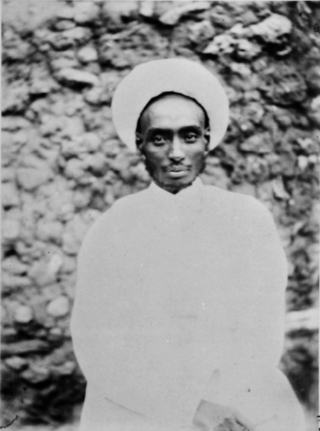
Amir Abdullahi, formally Abd Allah II ibn 'Ali 'Abd ash-Shakur or Amir Hajji 'Abdu'llahi II ibn 'Ali 'Abdu's Shakur, was the last amir of Harar and ruled from late 1884 to 26 January 1887, when the state was terminated, following the defeat of the Harari troops at the Battle of Chelenqo on 9 January.
Muhammad ibn 'Ali 'Abd ash-Shakur was the last Emir of Harar before the Egyptian conquest (1856–1875). He is remembered unfavorably by the Harari for favoring the neighboring Oromo people.
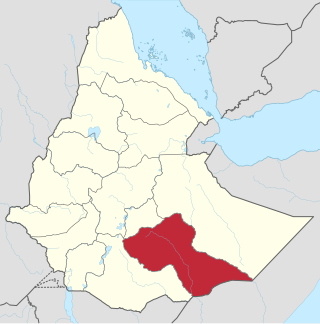
Bale, also known as Bali, is the name of two former polities located in the southeastern part of modern Ethiopia.

Galawdewos also known as Mar Gelawdewos, was Emperor of Ethiopia from 3 September 1540 until his death in 1559, and a member of the Solomonic dynasty. His throne name was Atsnaph Sagad I. A male line descendant of medieval Amhara kings, he was a younger son of Dawit II and Seble Wongel.

The Sultanate of Ifat, known as Wafāt or Awfāt in Arabic texts, or the Kingdom of Zeila was a medieval Sunni Muslim state in the eastern regions of the Horn of Africa between the late 13th century and early 15th century. It was formed in present-day Ethiopia around eastern Shewa in Ifat. Led by the Walashma dynasty, the polity stretched from Zequalla to the port city of Zeila. The kingdom ruled over parts of what are now Ethiopia, Djibouti and Somaliland.
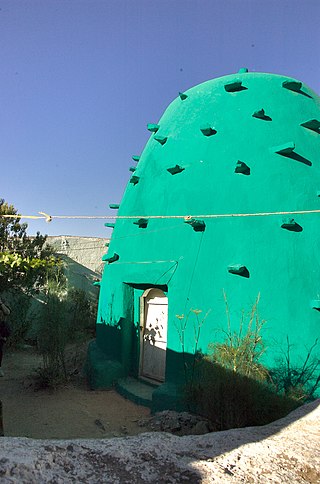
Nur al-Din or Nur ibn Mujahidibn ‘Ali ibn ‘Abdullah al Dhuhi Suha was a Somali Emir of Harar who ruled the Adal Sultanate. He was known for marrying his uncle's widow, Bati del Wambara, and he also succeeded Imam Ahmad as leader of the Muslim forces fighting Christian Ethiopia.
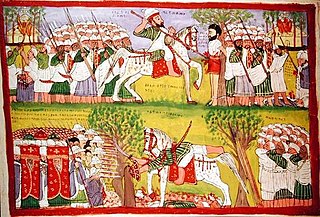
The Ethiopian–Adal War or Abyssinian–Adal War, also known in Arabic as the "Futuḥ al-Ḥabash", was a military conflict between the Christian Ethiopian Empire and the Muslim Adal Sultanate from 1529 to 1543. The Christian Ethiopian troops consisted of the Amhara, Tigrayans, Tigrinya and Agaw people, and at the closing of the war, supported by a few hundred Portuguese musketmen. Whereas Adal forces were mainly comprised of Harla, Somali, Afar, as well as Arab and Turkish gunmen. Both sides at times would see the Maya mercenaries join their ranks.
Abu Bakr II ibn ʽAbd al-Munan was the emir of Harar (1829-1852). He was the son of ʽAbd al-Mannan Garad of Zeila, the nephew of ʽAbd ar-Rahman ibn Muhammad, and the husband of Gisti Fatima, ʽAbd ar-Rahman's oldest daughter. He succeeded to the throne of Harar upon the death of ʽAbd ar-Rahman.
ʽAbd ar-Rahman ibn Muhammad was the Emir of Harar.
`Abd al-Karim ibn Abu Bakr was the Emir of Harar, Ethiopia. According to the British explorer Richard F. Burton, he was the brother of `Abd ar-Rahman ibn Muhammad.
The Harla, also known as Harala, Haralla are an ethnic group that once inhabited Somalia, Djibouti and Ethiopia. They spoke the now-extinct Harla language, which belonged to either the Cushitic or Semitic branches of the Afroasiatic family.
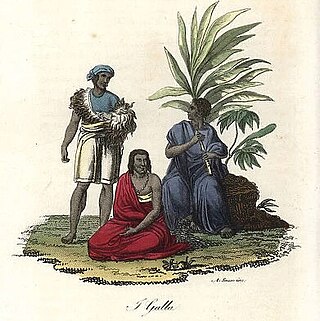
The Oromo expansions, also known as the Oromo migrations or the Oromo invasions, were a series of expansions in the 16th and 17th centuries by the Oromo. Prior to their great expansion in the 16th century, the Oromo inhabited only the area of what is now modern-day southern Ethiopia and northern Kenya. Over the centuries due to many factors, mostly the wars between Adal Sultanate and Ethiopia would further encourage the numerous Oromo tribes to expand towards central and eastern modern Ethiopia.

The Emirate of Harar was a Muslim kingdom founded in 1647 when the Harari people refused to accept Imām ʿUmardīn Ādan as their ruler and broke away from the Imamate of Aussa to form their own state under `Ali ibn Da`ud.
GaradAbun Ibn Adash or Abogn ibn Adish was a Harari Emir of the Adal Sultanate. He was the de facto ruler of Adal reducing the Adal sultan to nominal leader. In this period Sultan Abu Bakr ibn Muhammad would move Adal's capital to Harar city after killing emir Abun in order to regain influence in Adal.
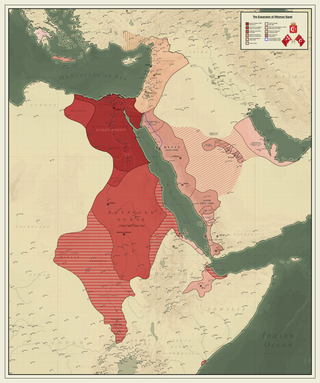
The Egyptian invasion of the Eastern Horn of Africa namely Hararghe and western Somaliland was part of a conflict between the Sultan of Aussa, Oromo, Somali tribesmen, and the Khedivate of Egypt from 1874 to 1885. In 1874, the Egyptians invaded Eastern Ethiopia namely Hararghe and western section of Somaliland and ruled it for 11 years.

Early history of Harar city is generally obscure, as many documents and records differ the exact date of the origin of the city. Most historical records state that Harar's history date back to 16th century, beginning with Adal Sultanate moving its capital from Dakkar to Harar during the reign of Sultan Abu Bakr ibn Muhammad. Other rudimentary oral tradition produced in 19th and 20th century stated that Harar history dated by in the 10th century or Abadir Umar ar-Rida founded the first Harar kingdom after migrating from Arabian Peninsula to spread Islam in 12th and 13th century.
The Geri Koombe is a sub-clan of Darod, The Geri are a Somali clan and one of the most ancient clans in the Somali civilization with the earliest records of Garadship. It belongs to the largest Somali groups, the Darod. The Geri live in the Ethiopian region of Somali between Harar and Jigjiga, in Wardheer zone, in Bale, Bay and Kismayo regions and in Northern Frontier District of Kenya.
Uthman the Abyssinian was the Emir of Harar who ruled the Adal Sultanate, from 1567 to 1569.